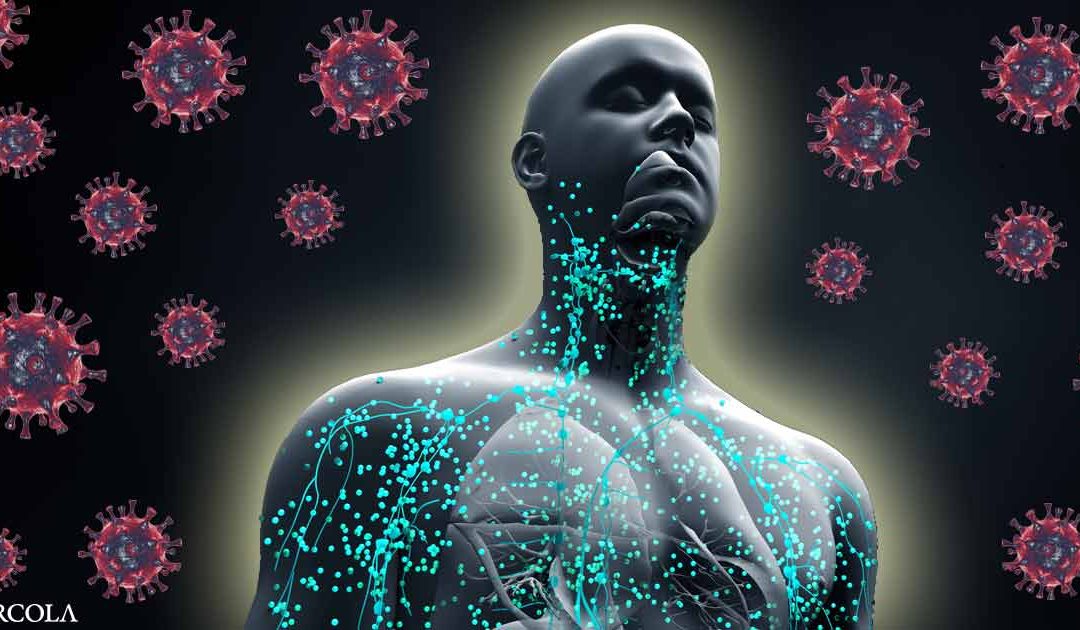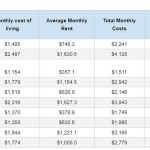This article was previously published August 16, 2020, and has been updated with new information.
Siim Land has written an excellent book called “Metabolic Autophagy: Practice Intermittent Fasting and Resistance Training to Build Muscle and Promote Longevity.”1 It’s a valuable synergetic companion to my book, “Fat for Fuel,” as it delves into some areas I did not cover. It compiles and presents all the basic science you need to know in a digestible format.
Here, we discuss Land’s latest book, “Stronger by Stress: Adapt to Beneficial Stressors to Improve Your Health and Strengthen the Body,”2 which came out in July 2020. It reviews the really important concepts of hormesis and antifragility.
“Part of the reason I wrote the book was to help people become more resilient and more robust, because the world we live in is full of unpredictable challenges,” Land says.
“Pandemics and viruses are part of them, but there’s also other potential dangers like global warming or fluctuations in temperature, different kinds of physical challenges that have been a part of the human condition for eons.
The modern human has become somewhat more fragile towards those things, and this kind of goes to show why most people just overreacted to the coronavirus and were really scared.
The book itself was meant to create more resilient people in the face of these unavoidable challenges of life, because you can’t really avoid them. You can’t create this bubble society where everything is perfect. We all come across different kinds of stressors all the time.”
Stronger by Stress
As it pertains to COVID-19, evidence suggests if you can get two key variables right — a vitamin D level of at least 30 ng/mL (75 nmol/L) and metabolic flexibility — your chances of getting sick from SARS-CoV-2 infection are fairly remote. But improving your resilience against stress is also important.
“If your body is unfit or lacking key nutrients, then even the smaller stressors in your life are going to become more dreadful. You’re going to experience chronic stress, and you’re going to overactivate the sympathetic nervous system, even if you’re stuck in traffic or if you spill a cup of coffee or whatever it is.
These small stressors can become really massive if your body is incapable of dealing with those stressors. On the other hand, if your body has been exposed to the right amount of stress at the right time, then it has also built up this higher level of stress adaptation and resilience. So, the small stressors are becoming literally meaningless. You have a bigger capacity to face even the larger stressors.”
What Is Antifragility?
Antifragility is a term coined by economist Nassim Nicholas Taleb in his book, “Antifragile: Things That Gain From Disorder.” The term describes a state that is the opposite of fragility. Antifragility describes how stress makes you stronger rather than breaking you down or apart.
“[Antifragility] isn’t precisely the same thing as robustness or resilience,” Land says. “Something that is robust is something like a piece of stone or a metal. You can heat it, you can drop it on the ground. It’s not going to break, but it’s going to stay the same, it’s not going to change, whereas something that is antifragile is going to gain from the stress.”
Time-Restricted Eating Builds Antifragility
One of Land’s favorite tools for health and longevity is intermittent fasting, or more accurately termed, time-restricted eating, and one of the reasons for this is because it allows you to become metabolically flexible and insulin sensitive, which builds your antifragility.
“A [2019] study in the New England Journal of Medicine found intermittent fasting mimics a lot of the same effects of calorie restriction. It can actually be somewhat more beneficial because it not only has life extension benefits, but it also turns on certain key defensive mechanisms inside a body that make it more antifragile and also provide additional health benefits.
One of those things has to do with autophagy, but there’s also things like increased glutathione, increased NRF2, sirtuins and NAD and many other longevity-boosting and immune-strengthening pathways that get activated when you’re fasting that don’t necessarily get activated when you are restricting calories.”
So, time-restricted eating is a great way to get the benefits of calorie restriction without experiencing the negative side effects from it, because extreme and prolonged calorie restriction can also leave you vulnerable and more fragile by triggering muscle loss, for example.
That will actually shorten your life span and make you more vulnerable to potential dangers in your environment, such as falling and breaking your hip. Intermittent fasting can sidestep these negative side effects.
Time-Restricted Eating for Muscle Building
A persistent question surrounding intermittent fasting is what the best strategy is. Should you eat just once a day, or can you get away with two or more meals as long as you eat it all within a certain time window? And, if so, how long can that window be? Land comments:
“I think there isn’t inherently much difference between eating one meal a day or doing the 16-to-8 type of intermittent fasting where you eat twice a day within eight hours because, already, if you’re fasting within one 24-hour period, then the fast itself isn’t substantially different. The amount of autophagy wouldn’t matter that much either in such a short timeframe, as long as you’re still healthy.”
Now, if your intention is to build muscle, having two meals a day within a six- to eight-hour window would make more sense. Having just one meal a day is likely better if you are seeking to lose weight, but might be challenging.
This is likely for the simple reason that you’re only going to build muscle when you activate mTOR, and to activate mTOR you need to introduce protein and leucine or branched-chain amino acids, along with some healthy carbohydrates.
If you eat twice, six hours apart, you can activate mTOR twice a day, thus allowing you to get better muscle-building benefits. As explained by Land:
“What determines your muscle growth throughout the 24-hour period is the balance between mTOR stimulation and autophagy. So, if you’re eating only once a day, then the amount of mTOR stimulation is relatively small compared to eating twice a day or three times a day.
That’s why if someone has the goal of increasing their muscle mass, maintaining muscle mass or preventing sarcopenia, then for them it is much wiser to incorporate more frequent meals. For them I would say that a 16-to-8 type of fasting where they eat twice a day is perfectly suitable, and is actually better than the one meal a day.
It becomes increasingly more difficult to maintain muscle mass if you’re already predisposed to sarcopenia and you’re eating once a day, because there’s a threshold of how much mTOR you can stimulate per meal, and how much muscle protein synthesis you can create per meal as well. It doesn’t have to mean that you start eating six times a day. Increasing the eating window is generally a better idea.
For most people, I would say that the 16-to-8 type of fasting, where they fast for 16 hours and eat within eight hours, is a really good balance between getting a daily stimulation in autophagy, while at the same time also stimulating enough mTOR and being able to build muscle.”
I found this advice personally helpful as I was pushing my eating window to four hours, but after Land related this commonsense strategy, I extended it to six to eight hours, which actually is easier on the kidneys. Also, as noted by Land, pushing your eating window to be excessively narrow can backfire and slow down your metabolism.
In the context of stress adaptation and antifragility, if your body becomes too accustomed to the fasting because you’re eating only one meal a day all the time, then that can eventually slow down your metabolism and lower thyroid functioning. This in turn makes you more prone to insulin resistance, which is exactly what you’re trying to avoid by eating just once a day.
Carbs Aren’t All Bad
While carbs have gotten a bad rap, they are still an important part of your diet. In fact, when you’re seeking to stimulate mTOR, carbs may be just as important as protein, because insulin secretion is a powerful activator of mTOR.
I believe carb cycling can be highly beneficial in this respect. If you’re chronically low-carb, it will provide you with significant benefits initially, but long-term, it can backfire. Land explains:
“Carbs can be useful for muscle growth, but they’re not a necessary part of it. You can stimulate mTOR and build muscle with protein only … but the insulin is still a very powerful anabolic hormone and it does help. It is possible to build muscle with a low carb or a ketogenic diet, but at the same time carbs can be also useful.
I do believe that chronic ketosis isn’t necessarily the best solution either, especially for metabolic flexibility because there are a lot of studies showing that chronic ketosis can eventually lead to insulin resistance or some mild forms of it …
I believe a more flexible approach is better in the long-term because you’re able to still use both. You’re still able to become a fat burner while at the same time you don’t become insulin resistant towards carbs either, and you can incorporate both.
In practice that would mean that people can do some form of cyclical keto diet, where they eat keto on some days but also incorporate some days where they eat more carbs to kick themselves out of ketosis, as well as break this mild insulin resistance that may develop. I myself like to eat keto on days where I’m not working out.
So, on my rest days where I don’t have a lot of physical activity, then it’s perfect to stay in ketosis and eat low carb because my body isn’t burning that many carbs for fuel either, whereas on days where I do high-intensity training or some resistance training, or on days when I want to really stimulate mTOR, and on those days, I’ll just have more carbs because the body uses carbs and glycogen during a workout.
If you eat carbs after a workout, then the body is already primed to use those carbs more efficiently instead of storing them as fat or instead of developing diabetes from it. So, it’s a perfect time to strategize or time your carbohydrate intake around your exercise.
Your body is the most insulin sensitive after a workout because the muscle contractions activate the glucose transporter GLUT4. Then you don’t even need insulin to shuttle carbs into muscle cells either. So that’s why having some carbs around a workout itself won’t necessarily be harmful as long as you are still metabolically flexible and you have metabolic health.”
Land’s explanation above caused me to change my own carb cycling to a more optimal schedule. While nothing is set in stone and listening to your body is important, if you are not insulin resistant, I believe cycling in carbs once or twice a week and remaining low-carb, below 50 grams per day, the rest of the week is a good strategy, as nutritional ketosis has so many profound metabolic benefits.
That said, if you’re already insulin resistant, as 90% of the population is, or diabetic, then adding carbs will be counterproductive, so it’s important to assess your individual situation. If your metabolic flexibility is already good, then being on a restrictive low-carb diet isn’t really necessary anymore.
Hydroxy Methylbutyrate
One excellent reminder in Land’s book is the importance of hydroxy methylbutyrate (HMB), a metabolite of the branched-chain amino acid leucine, which is the most potent stimulator of mTOR. To activate mTOR and boost muscle protein synthesis, you need a significant quantity of leucine, at least 3 grams.
I have kidney damage from mercury poisoning that limits me from eating high amounts of protein. The beautiful thing about HMB is it doesn’t stress the kidneys. After reading “Stronger by Stress,” I started adding HMB to my breakfast as I wasn’t getting the minimum dose of leucine needed to activate mTOR. Since then, I’ve noticed a significant change in my body’s ability to create more muscle mass. Land comments:
“Using leucine or HMB can be really useful for getting more protein synthesis from less protein. You can get away with eating less protein and still getting the benefits of the mTOR stimulation. But I would say that leucine itself could be better than HMB by itself.
HMB has some anticatabolic effects, but most of those effects are mediated by leucine and mTOR itself. You could use both, but if you want to get more benefits from the mTOR and muscle growth, then leucine is probably more important than HMB.”
The Benefits of Heat-Shock and Cold-Shock Proteins
“Stronger by Stress” also delves into the science of heat-shock proteins and cold-shock proteins, activated by exposure to heat and cold respectively. Heat-shock proteins repair misfolded proteins and RNA, increase glutathione and promote autophagy, among other things.
Cold-shock proteins also activate antioxidant defense mechanisms, and lower inflammation and oxidative stress. Born and raised in Estonia, Land is familiar with the cold, and embraces cold exposure for its physical conditioning and mental toughness benefits.
“If you are habitually engaging in cold exposure throughout the entire year, then the winter itself becomes a piece of cake. It becomes less stressful on yourself and it becomes less damaging. You’re able to adapt to it faster than normal people.
If you’re constantly using central heating or you’re using the heating in your car and you’re never really exposed to the cold for any longer than a few minutes, then you’re missing out on the benefits of the cold shock proteins. You’re also making your body more vulnerable and more fragile, back to the original point that we talked about.
So that’s why I do it. The mental aspect is also really great. I used to take a cold shower every morning, and it really helped me develop more self-discipline and self-control.
The rationale for me was that if I’m able to start the day with a cold shower, then anything else for the rest of the day is going to be that much easier because I already climbed over this initial challenge.”
Muscle Building Is Essential to Avoid Sarcopenia
In the interview, Land reviews some of his recommendations for high-intensity resistance training, such as doing multiple sets, split training and other strategies that are also covered in his book. As noted by Land, maintaining muscle and keeping physically active are probably two of the best things you can do to extend both your life span and health span.
Age-related muscle loss, called sarcopenia, is a significant threat to health that virtually no one can escape. Use it or lose it applies here, and muscle is far easier to lose than gain, and it’s lost much faster than you can build it.
For this reason, I strongly recommend strength training for all ages, especially the elderly. The good news is you can effectively build muscle without risking injury from heavy loads by using blood flow restriction (BFR) training. In Japan, where the technique was developed, it’s known as KAATSU. You can learn more about the fascinating history of BFR in my interview with Steven Munatones, who brought this fitness system to the U.S.
It’s important to realize that sarcopenia is not just cosmetic, and it’s not just about frailty. Your muscle tissue, which makes up about half of your body’s tissues, is a metabolic organ, an endocrine organ. Your muscle tissue makes cytokines and myokines, and is a sink for glucose.
Insulin resistance and Type 2 diabetes accelerate sarcopenia, and research shows glucose fluctuations are independently associated with this condition. As noted in one 2019 study,3 “glucose fluctuations were significantly associated with a low muscle mass, low grip strength, and slow walking speed.”
The effectiveness of BFR for the prevention and reversal of muscle wasting is directly addressed in an April 2019 study4 in the Journal of Cachexia, Sarcopenia and Muscle:
“Muscle wasting leads to significant decrements in muscle strength, cardiorespiratory, and functional capacity, which increase mortality rates. As a consequence, different interventions have been tested to minimize muscle wasting.
In this regard, blood flow restriction (BFR) has been used as a novel therapeutic approach to mitigate the burden associated with muscle waste conditions.
Evidence has shown that BFR per se can counteract muscle wasting during immobilization or bed rest. Moreover, BFR has also been applied while performing low intensity resistance and endurance exercises and produced increases in muscle strength and mass.
Endurance training with BFR has also been proved to increase cardiorespiratory fitness. Thus, frail patients can benefit from exercising with BFR due to the lower cardiovascular and join stress compared with traditional high intensity exercises.
Therefore, low intensity resistance and endurance training combined with BFR may be considered as a novel and attractive intervention to counteract muscle wasting and to decrease the burden associated with this condition.”
BFR Summary
In brief, BRF involves exercising your muscles while partially restricting arterial inflow and fully restricting venous outflow in either both proximal arms or legs.5
Venous flow restriction is achieved by using thin elastic bands on the extremity being exercised. By restricting the venous blood flow, you create a relatively hypoxic (low oxygen) environment in the exercising muscle, which in turn triggers a number of physiological benefits, including the production of hormones such as growth hormone and IGF-1, commonly referred to as “the fitness hormones.”6
It also increases vascular endothelial growth factor (VEGF), which acts as “fertilizer” for growing more blood vessels and improving their lining (endothelium).
I believe BRF is one of the best strategies available to address the epidemic of sarcopenia,7 and for most people who are not competitive athletes it may be the only form of resistance training they need. Land, like me, is a big fan of the KAATSU system,8 and uses it every day.
“If I’m not doing an actual workout with them, then I’ll just use the KAATSU cycle, the on and off pressures. So even if I’m not doing an actual exercise with them, then I’ll still do the cycle to pump more blood into the muscle and accelerate recovery.
On other days, I’ll use [the bands while doing] biceps curls and pushups. With the legs, I’ll do squats and lunges, or just regular walking. I really enjoy them and I find that they accelerate recovery. Even if it’s not for the exercise performance, I think the cardiovascular effects are still worthwhile.”
Bad Fats Are Worse for You Than Sugar
Land also discusses the benefits and importance of omega-3 fats, and the hazard of vegetable oils and oxidized, rancid fats. It’s important to realize that both omega-3 and omega-6 oils are integrated into your cell membranes.
While omega-3s make your cell membranes healthier, omega-6 fats from vegetable oils wreak havoc with your cellular metabolism, and have a half-life of 600 to 680 days, as explained in my interview with Dr. Chris Knobbe. I firmly believe, as does Land, that harmful oils and fats are far more hazardous to your health than added sugar and grain carbs.
“The aspect of lipid peroxidation itself is also accelerating aging and causes carcinogenesis and also leads the creation or the accumulation of lipofuscin, which is this age-related wear and tear pigment,” Land explains.
“Lipofuscin also begins to cause cellular damage and inhibits autophagy. Again, once you have bad fats stuck inside your cell membranes, then burning fat itself also becomes an inflammatory act.
So, if you are fasting while you have bad fats inside your cell membranes, then you are leaching those same bad fats into your system, and that’s why you may get a lot of detox symptoms. You may actually feel worse from fasting or ketosis just because you’re burning the wrong fats that are stuck inside your body fat.”
One simple way to tell whether you might have a lot of bad fats in your system is to look at your skin. The dark so-called “age spots” or “liver spots” many have are caused by lipofuscin. Those spots can eventually disappear if you clean up your diet.
More Information
We cover a lot of ground in this interview, as we review many of the topics Land covers in his book. For example, we touch on the harmful impact of high iron, which in conjunction with lipid peroxidation is particularly disastrous; the importance of sleep and nose breathing; and how to avoid mouth breathing while asleep.
We also discuss senolytic therapies — strategies that remove senescent (old, damaged) cells, thus providing antiaging benefits. One of the most effective senolytic therapies, in Land’s opinion, is intermittent fasting. Cyclical ketosis also helps clear out senescent cells, and certain compounds, such as curcumin, EGCG, quercetin, resveratrol, sulforaphane and allicin have senolytic effects.
Because fasting is a powerful senolytic therapy, these compounds are best taken while you’re fasting. So, for example, provided you’ve eaten your last meal early enough in the evening, take your supplement right before you go to bed. That way, it can work for another several hours while you’re sleeping.
Land also discusses how autophagy and nutritional ketosis may help protect against EMF damage. To learn more about all of these topics that we’ve merely scratched the surface of here, be sure to pick up a copy of “Stronger by Stress,”9 which is a great follow-up to and continuation of “Metabolic Autophagy: Practice Intermittent Fasting and Resistance Training to Build Muscle and Promote Longevity.”10 Both are excellent and well worth reading. In closing, Land reminds us:
“It’s important to engage in these small stressors that have a hormetic effect on a regular basis because they’re not permanent. You’re going to lose them if you don’t use them. So, if you don’t use the sauna, then you’re going to lose your ability to tolerate heat. The same applies to exercise, to fasting.
Those things should be a part of your regular lifestyle. They are really beneficial for your overall longevity as well as just resiliency against stress. So, I personally feel that doing intermittent fasting, cold showers, heat exposure — all those things have helped me tolerate stress in other areas of life much better.
I’m able to tolerate stress from work, I’m able to tolerate stress from other people so I don’t get triggered or I don’t get angry at other people. I’m not stressed out from those things because my stress resiliency is much higher than it is in the average person.”












